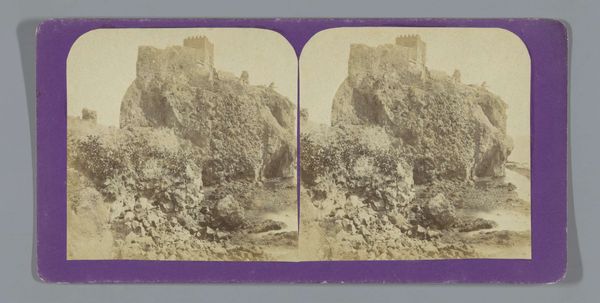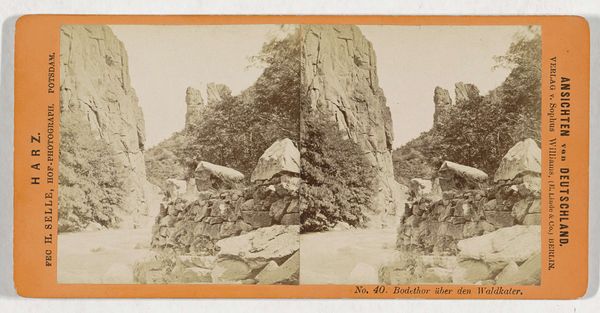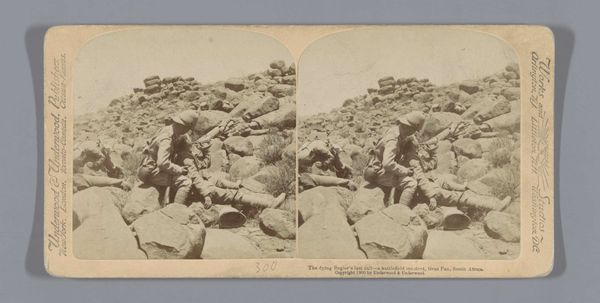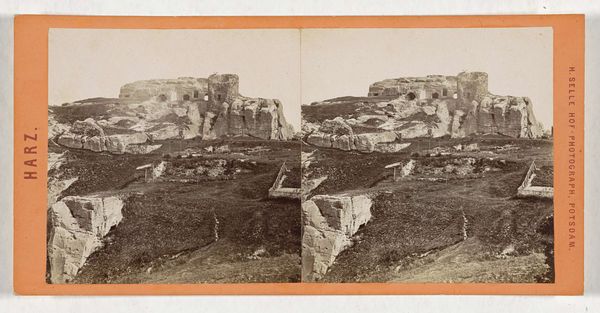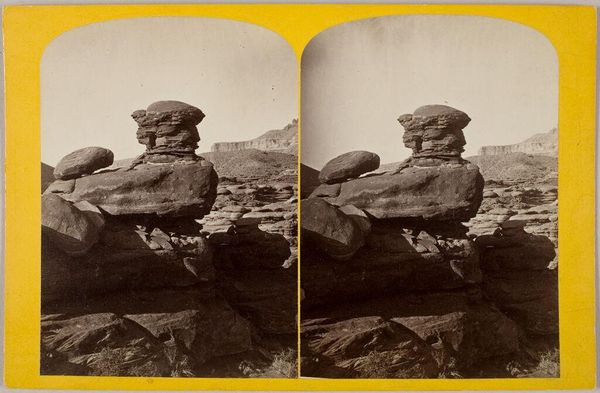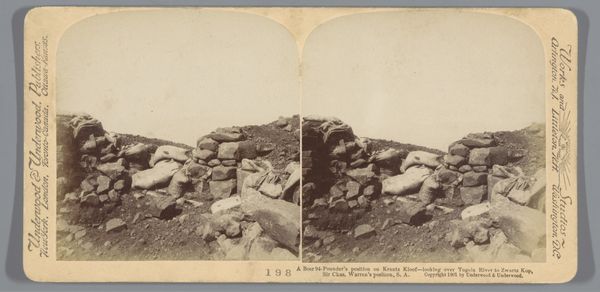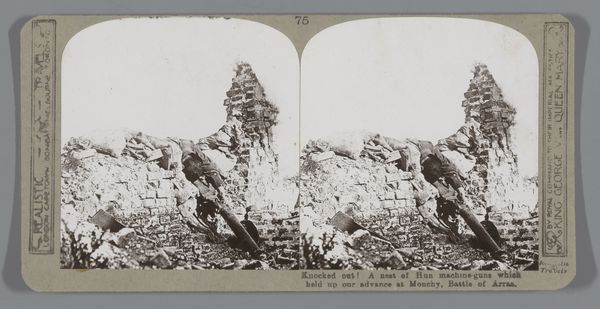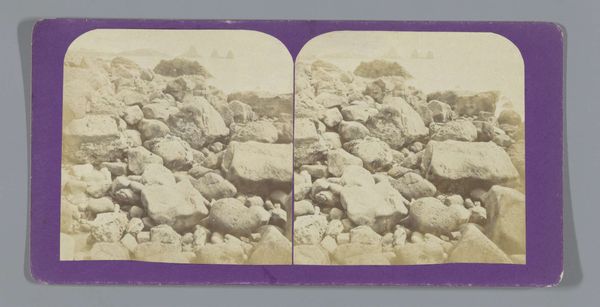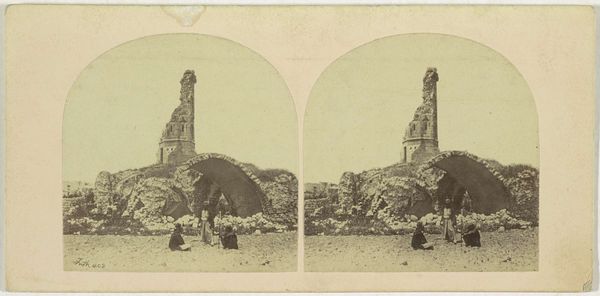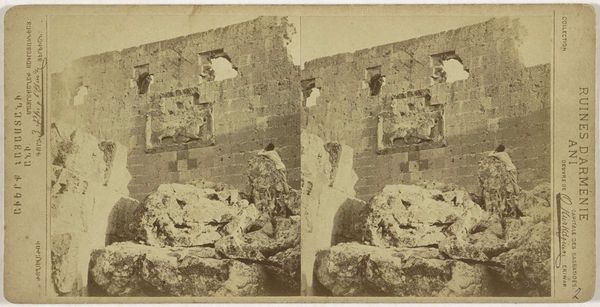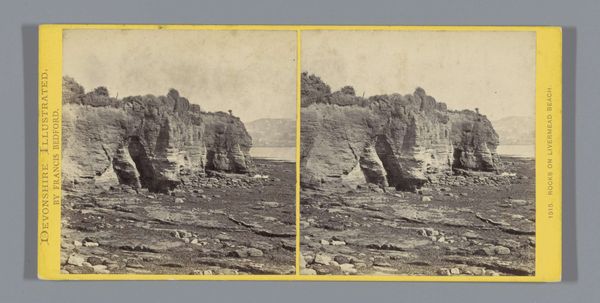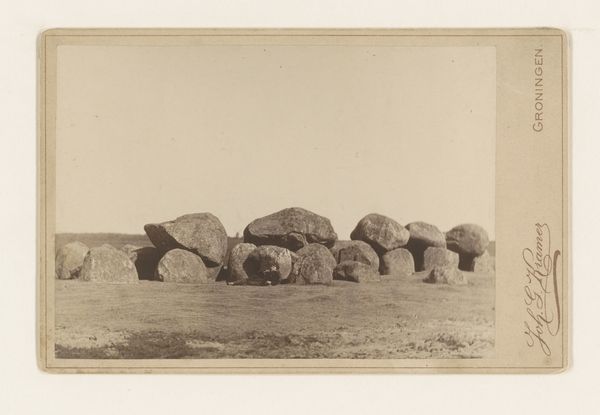
Dimensions: height 85 mm, width 170 mm
Copyright: Rijks Museum: Open Domain
Curator: This gelatin-silver print, taken by Francis Bedford sometime between 1850 and 1880, depicts a place in Devon called the Logan Stone op Rippon Tor nabij Lustleigh. The perspective really makes it look as though we could tumble right off that precariously balanced stone. Editor: Yes! There’s such a deep and quiet strength there. The landscape feels rugged, romantic—like a stage set for some ancient tale of druids or Arthurian knights. It reminds me of Caspar David Friedrich, but with a Victorian twist. Curator: Absolutely. Bedford was active during a period when photography was being heavily utilized for documentation as much as artistic expression, though clearly his romantic sensibilities bleed through. What does this 'logan stone' even mean though? Is it a feature in the Devon landscape, something balanced just so by the hand of nature? Editor: The “logan stone” has fascinating cultural implications. Stones like this, which move when touched, have been associated with Celtic druidism and oracular practices for centuries. This photo, though seemingly just a landscape study, evokes ideas around pre-Christian, pre-colonial histories. Curator: It feels like it teeters at the intersection of history, geology and folklore. I notice there's a figure—almost incidental, like a shadow—standing near the logan stone. The image whispers rather than shouts, prompting questions more than providing answers. It reminds me a little of the observer in Edward Hopper, both there, yet curiously absent. Editor: Exactly! That solitary figure throws ideas of scale and power into relief. Here’s nature’s monument, almost like a metaphor for withstanding centuries of human and elemental disruption. How do we find ourselves positioned, both in the shadow and grandeur of it all? Who are we in relation to such power and time? Curator: I think this quiet question it poses makes this so special. The way Bedford invites the viewer into a dialogue, encouraging contemplation about the past, our connection to the land, and what it all means in the long timeline, feels profoundly… human. Editor: For me, the power here lies in this convergence—nature, myth, photography—forming a layered lens through which to see ourselves. What do we preserve, what stories do we amplify, and how do we acknowledge that which predates and exceeds us?
Comments
No comments
Be the first to comment and join the conversation on the ultimate creative platform.
